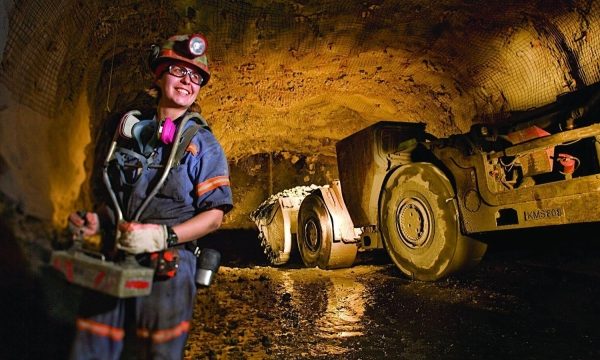Cryptocurrency mining has become an increasingly popular practice in recent years, with countless individuals and organizations looking to capitalize on the lucrative rewards offered by the digital realm. Among the tools utilized by miners, ASIC miners, or Application-Specific Integrated Circuit miners, have emerged as powerhouses in the realm of cryptocurrency mining. These specialized devices have revolutionized the process, offering incredible efficiency and unparalleled computing power. In this article, we aim to demystify ASIC miners, shedding light on their inner workings and exploring their impact on the world of cryptocurrency mining. So, let’s dive in and unveil the powerhouse behind these remarkable devices.
What is an ASIC Miner?
An ASIC miner, short for Application-Specific Integrated Circuit miner, is a powerful device designed specifically for the purpose of mining cryptocurrencies. Unlike traditional computer processors or graphics cards, ASIC miners are built with one primary objective: to efficiently solve the complex mathematical algorithms required for cryptocurrency mining.
ASIC miners are tailored to perform a specific hashing algorithm, such as SHA-256 for Bitcoin or Ethash for Ethereum. This specialization allows them to achieve significantly higher hash rates and energy efficiency compared to general-purpose hardware, making them the powerhouse of cryptocurrency mining.
In essence, ASIC miners are the workhorses of the mining industry, providing the computational power necessary to secure and validate transactions on the blockchain. Their specialized design and high-performance capabilities make them the preferred choice for individuals and organizations seeking to maximize their mining efficiency and profitability.
How ASIC Miners Work
ASIC miners are specially designed devices that are dedicated to one task: mining cryptocurrencies. These powerful machines utilize application-specific integrated circuits (ASICs) to perform the complex calculations required to validate and record transactions on a blockchain. By leveraging specialized hardware, ASIC miners have proven to be highly efficient and effective in the world of cryptocurrency mining.
When it comes to Bitcoin mining, ASIC miners have become the go-to choice for miners due to their unparalleled processing power. These miners are capable of performing trillions of calculations per second, which is essential in solving the mathematical puzzles required to validate transactions. By dedicating their computing power solely to mining, ASIC miners outperform traditional desktop computers or even graphics processing units (GPUs) by a significant margin.
ASIC miners are designed to specifically mine a particular cryptocurrency algorithm. This means that each ASIC miner is tailor-made for a specific coin, such as Bitcoin or Litecoin. This specialization allows ASIC miners to operate with utmost efficiency, consuming less energy compared to other mining methods. Their efficiency not only leads to higher mining rewards but also helps in maintaining the integrity of the blockchain network by reducing the chances of a 51% attack.
In addition to their sheer computing power, ASIC miners are also equipped with advanced cooling systems to prevent overheating during the intense mining process. These cooling mechanisms include powerful fans and heat sinks, which work together to dissipate the heat generated by the ASIC chips. By maintaining optimal temperatures, ASIC miners can deliver consistent performance while ensuring longevity.
In conclusion, ASIC miners have revolutionized the world of cryptocurrency mining by offering unparalleled efficiency and processing power. With their specialized hardware and dedicated design, they are capable of outperforming traditional mining methods and enhancing the security of blockchain networks. As the popularity of cryptocurrencies continues to grow, ASIC miners play a significant role in supporting and sustaining the decentralized nature of these digital assets.
Advantages and Disadvantages of ASIC Mining
Advantages:
Increased Efficiency: ASIC miners are specifically designed to perform cryptocurrency mining tasks, resulting in superior efficiency compared to other mining methods. Their advanced hardware and specialized architecture allow for faster and more precise calculations, maximizing the mining output for a given power consumption.
Enhanced Hash Rate: ASIC miners possess a significantly higher hash rate than other mining options. Hash rate refers to the number of calculations a miner can perform per second, and a higher hash rate means a greater chance of successfully mining new blocks and earning rewards. With ASIC miners, the hash rate is considerably boosted, leading to increased mining capabilities.
Cost-Effective in the Long Run: Although ASIC miners can be costly upfront, their efficiency and speed make them a cost-effective choice in the long run. Their ability to generate higher profits by mining cryptocurrencies at a faster rate allows miners to recover their initial investment quicker, making ASIC mining a financially viable option for dedicated miners.

Detailed list of GPU mining equipment
Disadvantages:
Lack of Versatility: ASIC miners are designed to mine specific cryptocurrencies and are not compatible with others. Once a new generation of ASIC miners is released, older models may become obsolete, requiring miners to constantly upgrade their equipment to remain competitive. This lack of versatility can be a drawback for those looking to mine a variety of cryptocurrencies.
High Initial Investment: Investing in ASIC mining equipment can be quite expensive, especially when considering the latest models. The cost of purchasing and setting up ASIC miners can deter individuals looking to enter the mining market, as it often requires a significant upfront investment.
Centralization Concerns: ASIC mining is more centralized compared to other mining methods such as CPU or GPU mining. This is because ASIC miners are produced by a limited number of manufacturers, meaning that a few large-scale miners can dominate the network. This centralization has raised concerns regarding the decentralization of cryptocurrencies and the potential for control to be concentrated in the hands of a few powerful entities.
In conclusion, ASIC mining offers advantages such as efficiency, enhanced hash rates, and long-term cost-effectiveness. However, the lack of versatility, high initial investment, and centralization concerns are important factors to consider when deciding on the mining approach to adopt.



